Join More Than 50,000+ Subscribers and get latest camera news and rumors
NEW CAMERA VIDEOS ON YOUTUBE
Download Our Android App
|
By admin, on January 14th, 2024
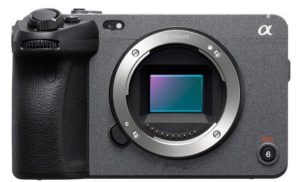
We are comparing the Sony FX30 versus the Panasonic S5 IIx. In this comparison, we will mainly focus on the videography aspects of both cameras. Let’s start.
First of all, the major difference we see between both cameras is the sensor size. Both the Panasonic S5 IIx and the Sony FX30 use BSI CMOS sensors, which is why we are expecting better low-light performance as well as dynamic range from the Panasonic S5 IIx camera.
Moreover, if we compare the ISO range for photography, the ISO range of the Panasonic S5 IIx camera goes up from 100 to 51,200 (Extended: 50 to 204,800). In contrast, the Sony FX30 goes up to 100 to 32,000 (Extended: 50 to 102,400). As you can see, the Panasonic S5 IIx can provide a better range.
Let’s also compare the Dual Native ISO range of both cameras available for video purposes. The Dual Native ISO range of the Sony FX30 camera is from 800 – 2500, whereas the Panasonic S5 IIx camera range is from 640 – 4000. Having a broader range means the sensor will give you more latitude in your file, and even at ISO 4000, the noise level of the Panasonic S5 IIx camera will be minimal.
| Specification |
Sony FX30 |
Panasonic S5 IIx |
| Sensor Type |
APS-C |
Fullframe |
| Resolution |
26 MP |
24 MP |
| Sensor Pixel Area |
14.10µm2 |
35.30µm2 |
| Low Light Performance |
Good |
Better (Expected) |
| Dynamic Range |
Good |
Better (Expected) |
| ISO Range for Photography |
100 to 32,000 (Extended: 50 to 102,400) |
100 to 51,200 (Extended: 50 to 204,800) |
| Dual Native ISO Range for Video |
800 – 2500 |
640 – 4000 |
Video Auto-Focus
| Specification |
Sony FX30 |
Panasonic S5 IIx |
| Sensor Type |
Hybrid CMOS AF |
Hybrid CMOS AF |
| Auto Focus for Photography |
Excellent |
Excellent |
| Auto Focus for Video |
Doesn’t Change with frame rates or resolution |
Changes with frame rate and resolution |
| Video Recording Modes |
4K up to 120p with Full time AF autofocus + Tracking | Crop at 4k 120p |
4K 24p, 30p and CROP 60p uses HYBRID AF. No 4k 120p Mode Available |
| Full HD Modes |
Full HD 240p with autofocus |
Full HD 24p, 30p uses HYBRID AF; Full HD 60p uses DFD (Contrast AF); Full HD 180p is manual focus only |
| Other Modes |
– |
6K Open Gate Recording uses DFD (Contrast-based AF) |
| ISO Limit for Autofocus |
– |
Switches to DFD focus if ISO is higher than 12800 when filming |
GYRO-BASED IMAGE STABILIZATION in SONY FX30
Gyro-based image stabilization is limited to the Sony FX30 only. When you switch off the sensor-based image stabilization mode of the Sony FX30, the gyro mode gets activated automatically. You don’t have to do anything, you just have to switch off the image stabilization mode.
We don’t have such a mode in the Panasonic S5 IIx camera. The image stabilization is limited to sensor-shift IBS only although you get IBIS up to 6.5 Stops.
Such a lethal combination requires gyro stabilization for sure. You have to get a camera that has fast autofocus performance even at higher frame rates. For example, if you’re recording dance videos or capturing something really cool in a cinematic way while holding the camera, then for sure both are required – autofocus at higher frame rates and gyro-based image stabilization.
| Feature |
Sony FX30 |
Panasonic S5 IIx |
| Gyro-Based Image Stabilization |
Yes, the Sony FX30 has gyro-based image stabilization. When you switch off the sensor-based image stabilization mode, the gyro mode gets activated automatically. |
No, the Panasonic S5 IIx does not have gyro-based image stabilization. Its image stabilization is limited to sensor-shift IBS only. |
| Live LUT Display |
Yes, the Sony FX30 allows you to upload Look-Up Tables (LUTs up to 16 or more) to the camera and display them live. This means you are able to visualize the type of LUT that is being implemented in the footage while recording the video. |
Yes, the Panasonic S5 IIx also allows you to upload Look-Up Tables (LUTs) to the camera and display them live. This means you are able to visualize the type of LUT that is being implemented in the footage while recording the video. |
| Easy EI Mode |
Yes, the Sony FX30 has an ‘Easy EI’ mode that automatically switches between the lower and upper gain state if you reduce exposure too far from what the base state can handle. |
No, the Panasonic S5 IIx does not have an ‘Easy EI’ mode. |
| 16 Bit Output |
Yes, the Sony FX30 has a 16-bit output. |
No, the Panasonic S5 IIx does not have a 16-bit output. |
| RAW OUTPUT |
APPLE PRORES |
APPLE PRO RES | BLACK MAGIC RAW |
| Writing Videos Directly to SSD Drives |
No, the Sony FX30 does not support recording videos directly to an SSD drive. |
Yes, the Panasonic S5 IIx allows you to record your videos directly to an SSD drive. Although Blackmagic Pocket Cinema videos are not available to be recorded directly to SSD, for the rest of the formats like V-Log and Apple ProRes, you can record your videos directly to an SSD drive. |
LIVE LUT DISPLAY IN BOTH CAMERA
Both the Panasonic S5 IIx and the Sony FX30 allow you to upload Look-Up Tables (LUTs) to the camera. The Panasonic S5 IIx is limited to 10 LUTs, but the Sony FX30 can upload up to 16 or even more. The most important part is that both cameras are able to display the live LUT function. This means you can visualize the type of LUT that is being implemented in the footage while recording the video. This is a really helpful feature in both cameras
Easy EI Mode for Beginners in SONY FX30
An ‘Easy EI’ mode does the same thing but automatically switches between the lower and upper gain state if you reduce exposure too far from what the base state can handle.
Focus Breathing compensation in Sony FX30
The Sony FX30 camera also allows for breathing compensation. If you use any third-party lenses with the camera, you won’t have any focus breathing issues. It’s worth mentioning that you also won’t notice any focus-hunting issues. As we have already mentioned, it’s more or less a foolproof camera in terms of autofocus performance.
Internal Fan Both Camera
Both cameras feature a built-in fan, so you won’t have any issues in the long run. Whether you’re recording 4K at 120 frames per second with your Sony FX30, or you’re recording 4K at 60 FPS with your Panasonic S5 IIx camera, the built-in fan will always keep your camera cool, even in adverse weather conditions
Writing Videos Directly to SSD Drives from Panasonic S5 IIX
The best thing about the Panasonic S5 IIx camera is that you can record your videos directly to an SSD drive. Although Blackmagic Pocket Cinema videos are not available to be recorded directly to SSD, for that you will need Black Magic video assistance. But, for the rest of the formats like V-Log and Apple ProRes, you can record your videos directly to an SSD drive.
Shooting Anamorphic with Panasonic S5 IIX and Sony FX30
One thing that professionals may like about the Panasonic as well as Sony camera is that you are able to shoot 3.3k anamorphic videos.
Anamorphic lenses come in different compression ratios, such as 1.33x, 1.5x, and 2x. The higher the compression ratio, the more “squeezed” the image will be
At the time of the announcement, Sony FX30 was missing the anamorphic mode, In addition to true 24p, FX3 Version 3.00 and FX30 Version 2.00 will offer anamorphic lens de-squeeze options of 1.3x and 2.0x, while FX3 Version 3.00 now features focus breathing compensation. So if you love to shoot with anamorphic lenses you can pic either of them.
By admin, on April 5th, 2023
Let’s compare the Sony FX 30 camera against the recently announced Sony ZV E1. Sony FX 30 camera has a bit more compact body and let’s discuss the features that we exclusively have in the FX 30
Also, see – Sony ZV-E1 vs Sony A74
1.Sony ZV-E1 advances over Sony FX30
1. Sony ZV-E1 Full Frame Sensor: The biggest advantage you have with the Sony ZV-E1 camera is Sony’s A7 S III 12mp ultra-low light-sensitive sensor that produces exceptional video quality even when used in extremely low light conditions. Having a Full-frame CMOS sensor of 12MP doesn’t allow the camera to move into the oversampling mode, resulting in NO Rolling shutter effect even when uses at higher shutter speed or MAX frame rates.
 Sony ZV-E1 paired with 28-70mm Lens
- Sony ZV-E1 Best Lenses for Content Creators – B&H Store | Amazon.com
- Sony ZV-E1 Best Lenses for Cinematographers – B&H Store | Amazon.com
2. ISO up to 409600 vs 102400: On the other side, we have the Sony FX30 camera that uses Sony’s 26-megapixel APS-C CMOS sensor which is quite useful when you are working in a controlled light environment. Now, being a pro cinema camera for beginners the camera also features dual native ISO but despite having all the technological advancement in FX30, have in this camera you cannot fight with the hardware (or the very physical nature of the sensor being used inside this camera), it allows capturing method details for better details, so low light performance wise ZV-E1 is a clear winner.
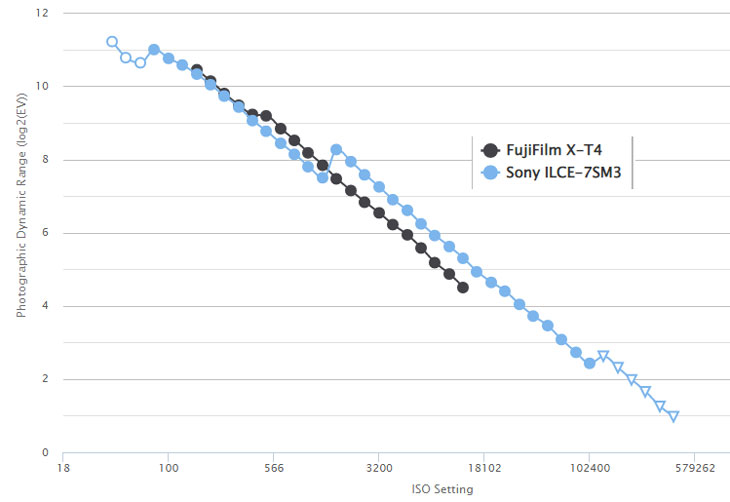 In the test above we have selected the Sony A7S III camera, as we know the Sony ZV-E1 camera uses the same sensor as we have seen on the Sony A7S III. And since we don’t have the test data of the Sony FX30 camera. so I have picked up a 26MP X-Trans BSI CMOS Sensor of the X-T5 to get a good idea of what the test will look like. Be assured we will update this test once the Sony FX30 data becomes available 3. Sony ZV-E1 Dynamic Range: The other biggest advantage that we get apart from low light performance is its dynamic range. With the Sony Z1 camera, you can extract 15 plus stops of dynamic range from your camera so it’s a perfect camera for shooting uncontrol light environment. And when you want to extract the maximum dynamic range from a given scene.
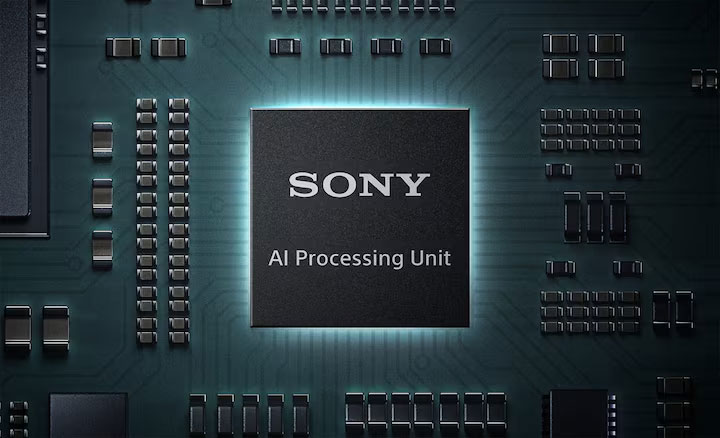
4. The artificial intelligent chip inside the camera: Human poses estimation using a skeleton-based model: With its innovative AI processing unit, the ZV-E1 uses subject form data to accurately recognize movement, providing an improvement of approx. 60% in human eye recognition14. Human pose estimation technology recognizes body and head position, so you can even track a subject facing away from the camera or wearing a mask.
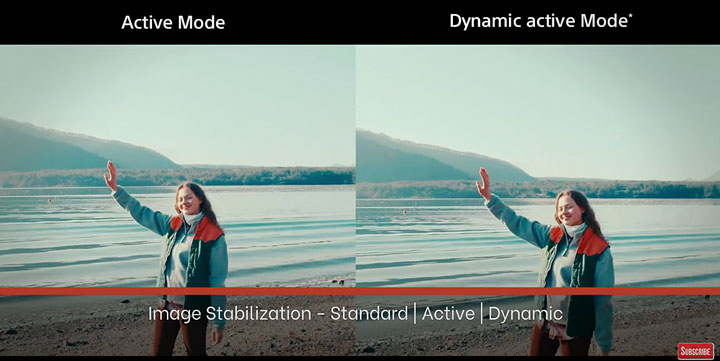
5. A compact, 5-axis stabilization unit and gyro sensors with optimized algorithms achieve up to 5.0-step stabilization. The in-body image stabilization of the camera provides effective stabilization with a wide range of lenses, including E-mount lenses that do not include their stabilization. Dynamic active Mode stabilization is approximately 30% more effective than what Active Mode provides. This makes it easier than ever to shoot smooth, stable footage while moving around for bold, dynamic expression.

6. The ZV-E1 also boasts a Framing Stabilizer that uses advanced AI-based subject recognition in conjunction with the camera’s Dynamic active mode image stabilization to automatically keep the subject’s position in the frame constant.
7. With the Multiple Face Recognition setting, the camera can automatically track multiple subjects within the frame. This feature helps to stabilize the framing and ensure that the subject remains in the frame. The AI processing unit can even differentiate between multiple subjects having different postures and recognition of individual faces so that tracking reliability is achieved in challenging situations such as when a subject’s face is tilted, in shadow, or backlit

8. The Product Showcase Setting includes an AF tracking switch that allows for consistent bokeh levels between the product and the subject, even when switching between different subjects.
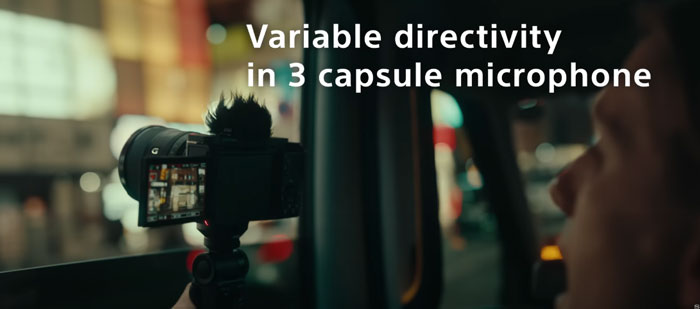
9. The Intelligent 3 Capsule Microphone captures clear audio, including the voice of your main subject. Depending on your shoot, you can set the microphone’s directivity to Front, Rear, All Directions, or Auto18. The camera also includes a Multi-Interface (MI) shoe with a digital audio interface and mic and headphone jacks offer expanded audio capabilities.
2. Sony FX30 advantages over ZV-E10
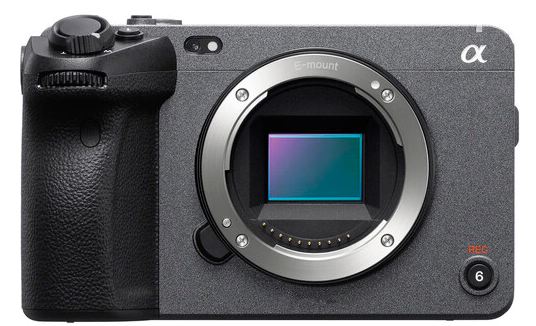
10. Devil lies in details: Why sometimes having a higher resolution APS-C sensor, is better than a lower resolution Full frame sensor. Sony FX30 does 26 MP Oversampling to produce exceptional 4k in details, so you have to understand this the Sony FX30 camera uses 26MP resolution to generate 4K files and the Sony ZV-E1 uses a 12MP sensor to generate 4K files, now if you are working in the controlled light environment the Sony FX30 4k (file will showoff more details of a given scene compared to Sony ZV-E1 12MP 4k files. But that also depends on several factors like the type of lenses used and the light environment.
Sony FX30 camera is built for professionals, in the ZV-E1 camera u do get excellent hardware inside, but the controls are simplified for beginners and you will miss a lot of features, that were maybe essential for your workflow.
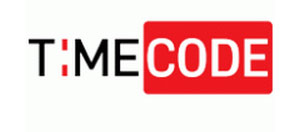
11 . TIME CODE: We have TIME CODE in the Sony fx30 camera, a time code functionality that is highly important for the synchronization of multiple cameras during a professional shoot. Time code is like a special signal generated along with the video reels that help find a specific moment or two to sync two or more two different videos seamlessly without any error.. It’s called SMPTE because the Society of Motion Picture and Television Engineers made it.
11. You get 16 BIT RAW via Full-Size HDMI: The second thing and of course the most important is 16-bit RAW output which is not possible with the Sony ZV E1 camera which is made for content creators
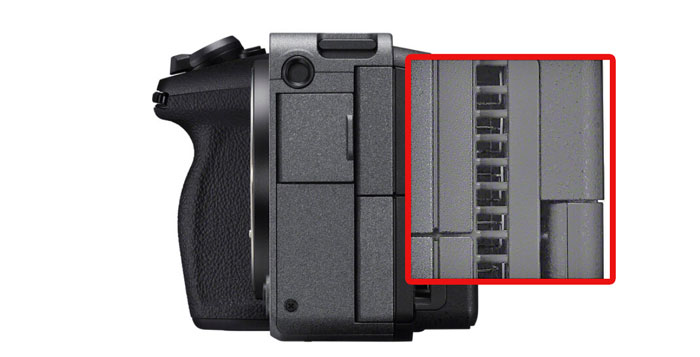
12. No Overheating in Sony FX30: The next BIG thing that you may miss in ZV-E1, is the external fan. The Sony FX 30 camera features an external fan so you don’t have any overheating issues. The biggest problem is Sony has trimmed down the cooling system of the Sony A7 S3 camera and we have a very weak heat sink unit in the new ZV E1 camera so if you are living near the equator or in Asian countries with variable weather conditions summers are very hot temperature raises to 40-degree centigrade so in that situation if you shoot outdoors like you are a travel blogger or you are a wedding cinematographer like to use your camera mostly outdoor then you have to be very careful before buying the Sony zv E1 camera
CROPS
- The much more significant crop comes in 120p mode, where the camera crops in to a 3840 x 2160 region of the sensor, giving a 1.62x crop.
- While using 4k UHD @ 120fps in ZV-E1 you have to face 10% crop
3. Sony ZV-E1 vs Sony FX30 – The Main Differences
|
Sony ZV-E1 |
Sony FX30 |
| Lens Mount |
Sony E |
Sony E |
| Sensor Resolution |
Effective: 12.9 Megapixel (4240 x 2832) |
Yes, with Autofocus Support |
| Sensor Type |
35.6 x 23.8 mm (Full-Frame) CMOS |
Actual: 27 Megapixel
Effective: 26 Megapixel (6192 x 4128) |
| Image Stabilization |
Digital, 5-Axis |
23.3 x 15.5 mm (APS-C) CMOS |
| Built-In ND Filter |
None |
None |
1. Exposure Control
|
Sony ZV-E1 |
Sony FX30 |
| Shutter Type |
Electronic Shutter |
Electronic Shutter |
| Shutter Speed |
1/8000 to 30 Second
1/8000 to 1 Second in Movie Mode |
1/8000 to 30 Seconds in Photo Mode
1/8000 to 1/4 Second in Video Mode |
| ISO Sensitivity |
Photo
80 to 102,400 (Extended: 80 to 409,600) |
100 to 32,000 (Extended: 50 to 102,400) |
| Metering Method |
14+ Stops |
14 Stops |
Video Mode | Frame Rates | Recording options
|
Sony ZV-E1 |
Sony FX30 |
| Internal Recording Modes |
RawXAVC HS 4:2:0 10-Bit
UHD 4K (3840 x 2160) at 50/59.94 fps [45 to 150 Mb/s]
UHD 4K (3840 x 2160) at 23.98 fps [30 to 100 Mb/s]
RawXAVC HS 4:2:2 10-Bit
3840 x 2160 at 50/59.94 fps [100 to 200 Mb/s]
RawXAVC S 4:2:2 8-Bit
UHD 4K (3840 x 2160) at 50/59.94 fps [100 to 200 Mb/s]
UHD 4K (3840 x 2160) at 25/29.97 fps [140 Mb/s]
RawXAVC S 8-Bit
1920 x 1080p at 100/120 fps [60 to 100 Mb/s]
1920 x 1080p at 50/59.94 fps [25 to 50 Mb/s]
RawXAVC S 10-Bit
1920 x 1080p at 23.98/25/29.97/50/59.94 fps [50 Mb/s]
RawXAVC S-I 10-Bit
3840 x 2160 at 59.94 fps [600 Mb/s]
1920 x 1080p at 59.94 fps [222 Mb/s] |
XAVC HS 4:2:2 10-Bit
UHD 4K (3840 x 2160)
XAVC S-I 4:2:2 10-Bit
UHD 4K (3840 x 2160)
1920 x 1080p from 1 to 240 fps
XAVC S
UHD 4K (3840 x 2160)
1920 x 1080p from 1 to 240 fps
XAVC Proxy
1920 x 1080
1280 x 720 |
| External Recording Modes |
None |
4:2:2 10-Bit via HDMI
UHD 4K (3840 x 2160) at 23.98/25/29.97/50/59.94 fps
ProResRAW 16-Bit via HDMI
4672 x 2628 at 23.98/25/29.97/50/59.94 fps |
| Fast-/Slow-Motion Support |
Yes |
Yes |
| User Uploadable LUT |
Yes |
Yes |
| Cinema Menu Interface |
Yes |
Yes |
| IP Streaming |
None |
2-Channel 24-Bit LPCM Audio
4-Channel 24-Bit LPCM Audio |
| Built-In Microphone Type |
AI-powered 3-capsule design |
Stereo (classical) |
2. Interface
|
Sony ZV-E1 |
Sony FX30 |
| Media/Memory Card Slot |
Single Slot: SD/SDHC/SDXC (UHS-II) |
Dual Slot: CFexpress Type A / SD |
| Video I/O |
Micro HDMI
|
1 x HDMI 2.0 Output |
| Audio I/O |
1 x 1/8″ / 3.5 mm TRS Stereo Microphone Input
1 x 1/8″ / 3.5 mm TRS Stereo Headphone Output |
2 x XLR / 1/4″ TRS Combo Microphone (+48 V Phantom Power) Input on Included Handle
1 x 1/8″ / 3.5 mm TRS Stereo Microphone Input on Camera Body
1 x 1/8″ / 3.5 mm TRS Stereo Headphone Output on Camera Body |
| Power I/O |
1 x USB-C Input |
1 x USB-C Input |
| Other I/O |
1 x USB-C (USB 3.2 / 3.1 Gen 1) Data Input/Output (Shared with Power Input)
1 x Sony Multi/Micro-USB Control |
1 x Sony Multi/Micro-USB (Timecode)
1 x USB-C (USB 3.2 / 3.1 Gen 2) |
| Wireless |
Wi-Fi, Bluetooth |
2.4 / 5 GHz Wi-Fi 5 (802.11ac) Control
Bluetooth |
| Mobile App Compatible |
Yes
*As of March, 2023: Check with manufacturer for the most up-to-date compatibility |
No
*As of February, 2023: Check with manufacturer for the most up-to-date compatibility |
| Global Positioning (GPS, GLONASS, etc.) |
None |
None |
3. Focus
|
Sony ZV-E1 |
Sony FX30 |
| Focus Type |
Auto and Manual Focus |
Auto and Manual Focus |
| Focus Mode |
Automatic, Direct Manual Focus, Manual Focus |
Automatic, Continuous-Servo AF, Direct Manual Focus, Manual Focus, Single-Servo AF, Touch AF & Shutter |
| Autofocus Points |
Photo
Phase Detection: 759
Video
Phase Detection: 627 |
Video
Phase Detection: 495 |
| Autofocus Sensitivity |
6 to +20 EV |
-3 to +20 EV |
Verdict: Sony ZV-E1 camera and FX30 orientation are completely different, If you create a vlog or shoot solo content then undoubtedly the best camera is Sony ZV-E1. But, at the same time, u have to deal with overheating issues if ur using your camera outside overheats quickly as per the latest reports we have from its reviewers. Sony FX30 is made for professionals under budget, if ur thinking about starting your carrier in cinematography, or short films, then with FX30, u will have the basic training high to handle cinema cameras.
Also, see – Sony ZV-E1 vs Sony A74
- Sony ZV-E1 Best Lenses for Content Creators – B&H Store | Amazon.com
- Sony ZV-E1 Best Lenses for Cinematographers – B&H Store | Amazon.com
By admin, on October 8th, 2022
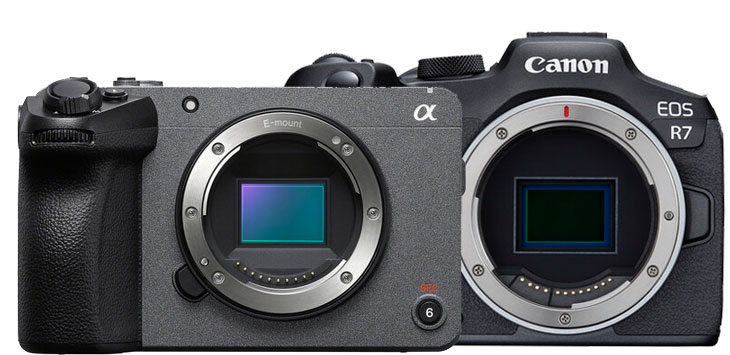
The Best Video Camera 2023 – Sony FX30 vs Canon R7 – The Canon R7 is a Mirrorless Hybrid Camera made for Photographers and cinematographers, the Sony FX30 is also a Mirrorless camera but made for cinematographers. In this comparison, we will find out the best camera to record videos.
In this comparison, we will keep our comparison limited to the Videographer.
1. Body and Controls
| Battery Type |
Sony Z-Series |
1 x LP-E6NH Rechargeable Lithium-Ion |
| Tripod Mounting Thread |
1 x 1/4″-20 Female (Bottom) |
1 x 1/4″-20 Female (Bottom) |
| Accessory Mount |
1 x Intelligent Hot Shoe on Camera Body
5 x 1/4″-20 Female on Camera Body |
1 x 1/4″-20 Female (Bottom) |
| Material of Construction |
Magnesium Alloy |
Magnesium Alloy |
| Dimensions (W x H x D) |
5.1 x 3.1 x 3.3″ / 129.7 x 77.8 x 84.5 mm |
5.2 x 3.6 x 3.6″ / 132 x 90.4 x 91.7 mm |
| Weight |
1.2 lb / 562 g (Body Only) |
1.2 lb / 530 g (Body Only)
1.3 lb / 612 g (With Battery, Recording Media) |
Interface
| Media/Memory Card Slot |
Dual Slot: CFexpress Type A / SD |
Dual Slot: SD/SDHC/SDXC (UHS-II) |
| Video I/O |
1 x HDMI 2.0 Output |
1 x Micro-HDMI Output |
| Audio I/O |
1 x 1/8″ / 3.5 mm TRS Stereo Microphone Input on Camera Body
1 x 1/8″ / 3.5 mm TRS Stereo Headphone Output on Camera Body |
1 x 1/8″ / 3.5 mm TRS Stereo Headphone Input
1 x 1/8″ / 3.5 mm TRS Stereo Microphone Output |
| Power I/O |
1 x USB-C Input |
1 x USB-C (USB 3.2 / 3.1 Gen 2) Input/Output |
| Other I/O |
1 x Sony Multi/Micro-USB (Camera Interface, Timecode)
1 x USB-C |
multi-function shoe is a hot shoe |
| Wireless |
2.4 / 5 GHz Wi-Fi 5 (802.11ac) Control
Bluetooth |
2.4 GHz Wi-Fi (802.11b/g)
Bluetooth |
2. Sensor
The Canon R7 sensor is a 32.5MP FSI CMOS sensor, There are two variants of CMOS: Front-side illuminated (FSI) and back-side illuminated (BSI). What makes a BSI CMOS sensor better than a conventional CMOS sensor? The simple answer is that the design makes it easier for light to reach the photo diodes on the sensor, BSI CMOS sensor ups readout speed and improves low-light imaging. And the Sony FX30 Camera features 26 MP BSI CMOS Sensor. So, sensor architecture says the Sony is better.
3. Video Resolution & Frame rate
| 4K 120 (1.6x / super 35mm look) |
None |
| 4k 60 (1.04x crop) |
4K 60p HQ (1.8x Crop) / 4K Fine uncropped |
| 4k 24, 30 fps |
4k 24, 30 without crop |
| Full HD 240 FPS |
Full HD 120 FPS |
As you can see the Sony FX30 camera is able to shoot videos up to 4k 120 fps and Full HD videos up to 240 FPS. The crop factor of the Sony FX30 camera is negligible in 4k 60FPS mode and we do have an excessive crop in 4K video of the canon R7 camera if we are not using the “FINE” video mode. If we select the 4k 60fps full sensor readout mode in the Canon R7 then the camera goes into line-skipping algo and does record 4k videos with less details.
4. Video Codec
The Sony FX30 Record in 10-bit 4:2:2 using advanced XAVC HS and XAVC S-I formats. But, in Canon, we are missing the ALL-I intra format and so the MAX BIT RATE Speed. I don’t know why Canon always keep out the ALL-I intra format from their Mirrorless cameras. The S-Log3, the FX30 can capture 14+ stops of dynamic range. in Canon R7 we have the Clog3.
The FX30 camera is capable of producing RAW video data up to 16 BIT from the HDMI port. the Canon R7 remains limited to 10 BIT.
Additional features include S-Cinetone uses the same color science as Sony’s advanced cinema cameras, including the VENICE line, with natural mid tones, soft colors, and smooth highlight roll-off. And the most important part is Up to 16 user-created LUTs and three presets can be set for accurately monitoring footage or previewing a specific look during shooting. These can be applied to the camera’s monitor or EVF as well as the HDMI output.
5. Low-Light performance
Recording at the base ISO enables you to take full advantage of the image sensor performance. You can capture material that withstands color grading better, without becoming degraded.
|
Std. Video ISO Range |
|
| Canon R7 |
200 |
25600 |
| Sony FX30 |
100 |
32000 |
Dual Native ISO range a in RAW video is available in Sony FX30 camera.
| Base ISO |
Upper gain step |
| Std color mode / HLG |
ISO 100 |
ISO 320 |
| S-Cinetone |
ISO 125 |
ISO 400 |
| S-Log3 |
ISO 800 |
ISO 2500 |
Recording at the base ISO enables you to take full advantage of the image sensor performance. You can capture material that withstands color grading better, without becoming degraded. Two base ISO options are available for FX30 also as you can see in the table above, for low or high sensitivity. Choose a base ISO to suit the scene you are shooting.
6. Image Stabilization
Sony FX30 features Mechanical Image stabilization / 5-axis in-body image stabilization, as well as FX30, which can also record gyro movement when the optical + Mech. stabilizers are turned off. Canon R7 camera features an excellent mechanical IBIS unit that corrects up to 7 stops of unwanted camera shake when shooting handheld.
7. Verdict
Sony FX30 is the best camera for recording videos when compared to the Canon R7 camera.
Recommendation

Recommended Lenses Tamron 28-75mm F2.8 Lens Amazon | B&H Store
Best lenses for Sony FX30
18-105mm Lens for Video Buy this Lens from Amazon.com | B&H Store
Get Rokinon 12mm F2.0 Lens from Amazon.com | B&H
Sony Portrait Lens – Sigma 85mm F1.4 B&H | Amazon.com | Budget Lens Sony 50mm F1.8 Amazon
By admin, on October 6th, 2022
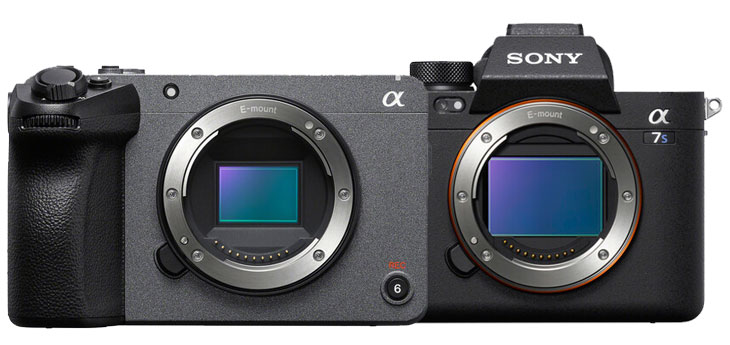
Body design wise both the cameras are completely different, the one is a Hybrid Mirrorless camera and the other one is a Cinema camera with excessive mount threads over it. So, they are very different from each other specifically if we talk about the design difference of both cameras.
But, does the Price difference: We have a good price difference between the two cameras. the Sony FX30 is more affordable, but the big question us does the Sony A7S 3 camera deserve the high price we are paying off
Perspective: Our perspective is to find out the Bets video | Cinema camera OR camera for content creators. We are not considering the photographic features of any of these two cameras.
|
Sony FX30 |
Sony A7S III |
| Sensor Resolution |
Actual: 27 Megapixel
Effective: 26 Megapixel (6192 x 4128) |
Actual: 12.9 Megapixel
Effective: 12.1 Megapixel (4240 x 2832) |
| Sensor Type |
23.3 x 15.5 mm (APS-C) CMOS |
35.6 x 23.8 mm (Full-Frame) CMOS |
| Image Stabilization |
Sensor-Shift, 5-Axis |
Sensor-Shift, 5-Axis |
1. Sensor
The Sony A7S 3 camera features a full-size sensor made to record 4k high-quality videos. During the time time of the A7S series camera development, the only intention of the Sony R&D team member was to create such a camera that neither goes into sub-sampling nor oversampling so the heat dissipation will be very less and users will get a high-quality 4k video.
The Sony FX30 camera features a newly developed 26 MP BSI CMOS sensor., the sensor does oversample to create 4K files and of course, due to its APS-C size we have to face some limited low -Light performance
2. Video Resolution
| Sony FX30 |
Sony A7S 3 |
| 4k 120fps [1.6x crop] |
4k 120 fps [1.1 X crop] |
| 4k 60 FPS [1.04x crop] |
4k 60 FPS |
| Full HD 240 FPS |
Full HD 240 FPS |
| 16-BIT RAW OUPUT VIA HDMI |
16-BIT RAW OUPUT VIA HDMI |
|
|
As you can see the video resolution of the Sony A7s3 camera is more than perfect compared to the video resolution of the Sony FX30 camera. The FX30 camera does have a significant amount of crop when ur recording videos at the 4K 60dfps mode. The Sony A7S 3 also has a 1.1 X crop factor that remains mostly unnoticeable.
Sony FX3 will capture more details in Studio Light
While working with the base ISO range in FX3, we will surely have the extra resolution advantage of the FX3 camera. So, if you are working with lights u will have more details in the 26 MP oversampled 4k file compared to a 12MP 4k file. At the same time, the advantage is limited to its base ISO range.
3. Low-Light Performance
| Sony FX30 |
Sony A7S 3 |
| Dual Native ISO Range [Log3] |
Dual Native ISO Range [Log3] |
| 800-2500 |
640-12800 |
| Standard and expandable ISO range |
80 to 102,400 (Extended: 40 to 409,600) |
| 100 to 32,000 (Extended: 50 to 102,400) |
80 to 102,400 (Extended: 40 to 409,600) |
|
|
Sony A7s3 with its massive DUal Native ISO range (as well std and expandable) will give you more clean and more neat video output in a low-light situation compared to the Sony FX30 camera.
Frame Rates
| Recording Modes |
XAVC HS 4:2:2 10-Bit
UHD 4K (3840 x 2160) at 23.98p/25p/29.97p/50p/59.94p/100p/119.88p
XAVC S-I 4:2:2 10-Bit
UHD 4K (3840 x 2160) at 23.98p/25p/29.97p/50p/59.94p
Full HD (1920 x 1080) at 23.98p/25p/29.97p/50p/59.94p/119.88p
XAVC S
UHD 4K (3840 x 2160) at 23.98p/25p/29.97p/50p/59.94p
Full HD (1920 x 1080) at 23.98p/25p/29.97p/50p/59.94p/119.88p
XAVC Proxy
Full HD (1920 x 1080)
HD (1280 x 720) |
H.265/XAVC HS 4:2:2 10-Bit
UHD 4K (3840 x 2160) at 23.98p/50p/59.94p/100p/119.88p [50 to 280 Mb/s]
H.265/XAVC HS 4:2:0 10-Bit
UHD 4K (3840 x 2160) at 23.98p/50p/59.94p/100p/119.88p [30 to 200 Mb/s]
H.264/XAVC S-I 4:2:2 10-Bit
UHD 4K (3840 x 2160) at 23.98p/25p/29.97p/50p/59.94p [240 to 600 Mb/s]
Full HD (1920 x 1080) at 23.98p/25p/29.97p/50p/59.94p [89 to 222 Mb/s]
H.264/XAVC S 4:2:2 10-Bit
UHD 4K (3840 x 2160) at 23.98p/25p/29.97p/50p/59.94p/100p/119.88p [100 to 280 Mb/s]
Full HD (1920 x 1080) at 23.98p/25p/29.97p/50p/59.94p/100p/119.88p/200p/239.76p [50 Mb/s]
H.264/XAVC S 4:2:0 8-Bit
UHD 4K (3840 x 2160) at 23.98p/25p/29.97p/50p/59.94p/100p/119.88p [60 to 200 Mb/s]
Full HD (1920 x 1080) at 23.98p/25p/29.97p/50p/59.94p/100p/119.88p/200p/239.76p [16 to 100 Mb/s] |
| Variable Frame Rates |
UHD: Up to 119.88 fps
1080p: Up to 240 fps |
UHD: Up to 119.88 fps
1080p: Up to 240 fps |
| Gamma Curve |
HDR-HLG, S Cinetone, Sony S-Log 3 |
HDR-HLG, S Cinetone, Sony S-Log 3 |
| LIMIT |
Unlimited |
Unlimited |
| Audio Recording |
2-Channel 24-Bit LPCM Audio
4-Channel 24-Bit LPCM Audio |
XAVC: 2-Channel 16-Bit 48 kHz LPCM Audio
XAVC: 2-Channel 24-Bit 48 kHz LPCM Audio
XAVC: 4-Channel 24-Bit 48 kHz LPCM Audio
MP4: 2-Channel AAC Audio |
|
|
|
4. Image Stabilization
Both of these Sony cameras feature a 5.5-stop effective 5-axis SteadyShot INSIDE image stabilization system. Additionally, we also have gyro-based image stabilization.
5. Video Codecs
Video codecs are similar, the good thing is being a Sony camera we are allowed to record videos in IPB format and ALL-I Intra format [XAVC-S, XAVC-HS, and XAVC S-I]. Both of them record 10 BIT 4:2:2 videos internally either you are recording it in 4K 120fps mode or in 4K 24fps mode.
When You should buy Sony FX30 camera
We can clearly see the Sony A7S 3 camera’s low-light performance is better, but it is not a cinema camera hence missing our features like the Timecode functionality, Custom user LUT upload function, Focus MAP, and Breathing compensation. These are the extra set of features we have in our FX30 camera. If ur looking for a true cinema camera under budget then FX30 is the best option in front of you.
When You should buy Sony A7S3 camera
If budget isn’t an issue neither is the type of device or use, undoubtedly the Sony A7S3 will give you cleaner output in low light. If you want to have an excellent low-light performing cinema camera like Sony A7S 3 then you have to invest in Sony FX3.
Get Sony FX30 camera from B&H Store
Get Sony A7S III Camera from B&H Store | Amazon
By admin, on September 30th, 2022
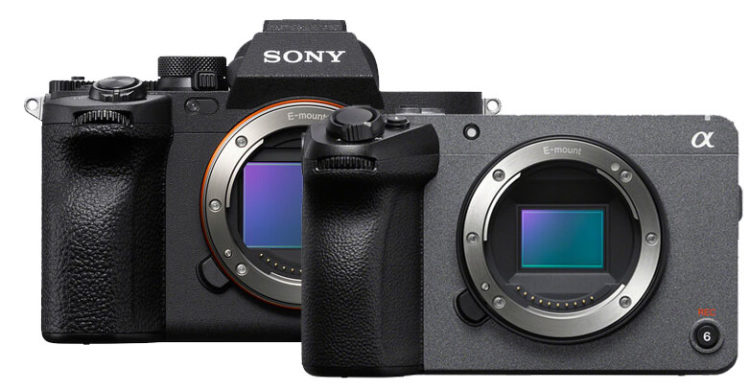
Let’s compare the Sony FX30 camera with the Sony A7 IV camera. Do share your thoughts with us
Design-wise
Design-wise Sony A74 is more inclined towards photographers, with a LARGE handgrip design and a high res 3.6Millionb dot EVF, you easily able to shoot your subjects. The FX30 is made for cinematographers, look at the number of mounting threads we have on the FX30 body.
Imaging
| Lens Mount |
Sony E |
Sony E |
| Sensor Resolution |
Actual: 27 Megapixel
Effective: 26 Megapixel (6192 x 4128) |
Actual: 34.1 Megapixel
Effective: 33 Megapixel |
| Sensor Type |
23.3 x 15.5 mm (APS-C) CMOS |
35.9 x 23.9 mm (Full-Frame) CMOS |
| Image Stabilization |
Sensor-Shift, 5-Axis |
Sensor-Shift, 5-Axis |
| Camera Type |
Video |
Stills & Video [Hybrid] |
Sony A7 IV is a Hybrid Camera and more Photography Oriented
The Sony A74 advantage
With the Sony A74 camera we are getting Sony’s latest 33MP Fullframe sensor. Undoubtedly with a full-frame sensor-based camera, you will get better results while shooting your subjects than with an APS-C sensor.
More for Photographers
Dynamic Range graph of Sony A74 – DR Boost at ISO 400 – Sony Fullframe cameras do carry a Dual Native ISO circuit for photography too… but Sony never talks about that officially.
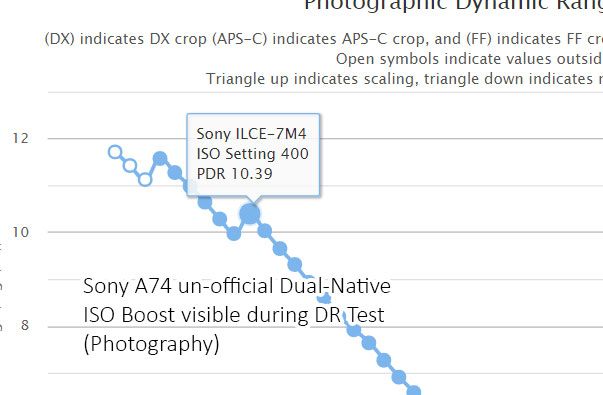
The A7IV has a dual-gain for photos at ISO 400. So ISO 400 has more DR and should have slightly better noise than ISO 320 and ISO 250. ISO 250 is very close…just slightly below ISO 400. The only ISO to avoid is ISO 320
Via test when came to know about the boost for still photography. In the video as per a few expert’s options, the Boost is available @ ISO 1600 in A7 IV.
Less Rolling shutter with Mechanical Shutter
Sony A7 4 camera features a mechanical shutter and a TOP speed of 10 FPS, while ur using your camera in burst mode if u have mechanical shutter ON you will comparatively faceless rolling shutter than a camera that only uses an electronic shutter. either way, the Sony A7 IV is the best camera when we talk about shooting still subjects.
Internal Video Capture
| Recording Modes |
XAVC HS 4:2:2 10-Bit
UHD 4K (3840 x 2160) at 23.98p/25p/29.97p/50p/59.94p/100p/119.88p
XAVC S-I 4:2:2 10-Bit
UHD 4K (3840 x 2160) at 23.98p/25p/29.97p/50p/59.94p
Full HD (1920 x 1080) at 23.98p/25p/29.97p/50p/59.94p/119.88p
XAVC S
UHD 4K (3840 x 2160) at 23.98p/25p/29.97p/50p/59.94p
Full HD (1920 x 1080) at 23.98p/25p/29.97p/50p/59.94p/119.88p
XAVC Proxy
Full HD (1920 x 1080)
HD (1280 x 720) |
H.265/XAVC HS 4:2:2 10-Bit
UHD 4K (3840 x 2160) at 23.98p/50p/59.94p [50 to 200 Mb/s]
H.265/XAVC HS 4:2:0 10-Bit
UHD 4K (3840 x 2160) at 23.98p/50p/59.94p [30 to 150 Mb/s]
H.264/XAVC S-I 4:2:2 10-Bit
UHD 4K (3840 x 2160) at 23.98p/25p/29.97p/50p/59.94p [240 to 600 Mb/s]
Full HD (1920 x 1080) at 23.98p/25p/29.97p/50p/59.94p [89 to 222 Mb/s]
XAVC S 4:2:2 10-Bit
UHD 4K (3840 x 2160) at 23.98p/25p/29.97p/50p/59.94p [100 to 200 Mb/s]
Full HD (1920 x 1080) at 23.98p/25p/29.97p/50p/59.94p [50 Mb/s]
XAVC S 4:2:0 8-Bit
UHD 4K (3840 x 2160) at 23.98p/25p/29.97p/50p/59.94p [60 to 150 Mb/s]
Full HD (1920 x 1080) at 23.98p/25p/29.97p/50p/59.94p/100p/119.88p [16 to 100 Mb/s] |
| Variable Frame Rates |
UHD: Up to 119.88 fps
1080p: Up to 240 fps |
4UHD: Up to 119.88 fps
1080p: Up to 240 fps |
| Gamma Curve |
HDR-HLG, S Cinetone, Sony S-Log 3 |
HDR-HLG, S Cinetone, Sony S-Log 3 |
| Built-In Microphone Type |
Stereo |
Stereo |
| Audio Recording |
2-Channel 24-Bit LPCM Audio
4-Channel 24-Bit LPCM Audio |
2-Channel 24-Bit 48 kHz LPCM Audio
4-Channel 24-Bit 48 kHz LPCM Audio |
Sony FX30 is a Video Camera from the inside out
If we talk about the body desing of the FX30 camera which include ehnaced telly light, timecode input ports & dedicated fan for cooling camera body, if we talk about the Tile based Menu system that directly arrived from FX9 or FX3, Up to 16 user-created LUTs, Timecode funcintlaity or Quick Exposuer index mode for boosting up the perfomance of the Sony FX30 while shooting log or with S-Cinetone.
Even if they share the same codec range
XAVC HS, which uses HEVC/H.265 encoding to retain more detail at smaller bitrates, and XAVC S-I, which is an intraframe codec for consistent performance and quality.
X-AVC HS (H.265 Long GOP)
X-AVC I (H.264 All-I)
X-AVC S (H.264 Long GOP)
It also highlights the key difference between what we now call Long GOP compression (smaller files, potentially lower quality) and All-Intra, or All-I compression (larger files, potentially better quality)
Exposure Index Mode and Dual Native ISO available in Sony FX30 Only
| Base ISO |
Upper gain step |
| Std color mode / HLG |
ISO 100 |
ISO 320 |
| S-Cinetone |
ISO 125 |
ISO 400 |
| S-Log3 |
ISO 800 |
ISO 2500 |
Recording at the base ISO enables you to take full advantage of the image sensor performance. You can capture material that withstands color grading better, without becoming degraded.
Two base ISO options are available for FX30 also as you can see in the table above, for low or high sensitivity. Choose a base ISO to suit the scene you are shooting.
Log shooting can be divided into three methods: “Flexible ISO,” “Cine EI,” and “Cine EI Quick.”
| Item |
Normal movie shooting |
Log shooting: Flexible ISO |
Log shooting: Cine EI |
Log shooting: Cine EI Quick |
| Type of shooting |
ITU709/BT.2020 |
Log |
Log |
Log |
| ISO sensitivity/EI (Exposure Index) |
ISO sensitivity can be adjusted |
ISO sensitivity can be adjusted |
Shooting with EI
(The ISO sensitivity for recording is locked to Base ISO) |
Shooting with EI
(The ISO sensitivity for recording is locked to Base ISO) |
| Base ISO |
― |
― |
Setting is required |
Set automatically according to the EI |
| Amount of freedom of color grading in post-production |
Low |
Middle |
High |
High |
The above all clearly shows
You have amazing flexibility with the Sony FX30 camera if you are more into video rather than photography.
| Shutter Type |
Electronic Rolling Shutter |
Mechanical Focal Plane Shutter, Electronic Shutter |
| Shutter Speed |
1/8000 to 30 Seconds in Photo Mode
1/8000 to 1/4 Second in Video Mode |
1/8000 to 30 Seconds |
| ISO Sensitivity |
100 to 32,000 (Extended: 50 to 102,400) |
Photo
100 to 51,200 (Extended: 50 to 204,800)
Video
100 to 51,200 (Extended: 100 to 102,400) |
| Advertised Dynamic Range |
14 Stops (Log3) |
|
| White Balance |
2500 to 9900K
Presets: Auto, Cloudy, Color Temperature, Daylight, Fluorescent, Incandescent, Shade, Underwater |
Presets: Auto, Cloudy, Color Temperature, Color Temperature Filter, Custom, Daylight, Flash, Fluorescent (Cool White), Fluorescent (Day White), Fluorescent (Daylight), Fluorescent (Warm White), Incandescent, Shade, Underwater |
Video Resolution & Frame rate
| 4K 120 (1.6x / super 35mm look) |
None |
| 4k 60 (1.04x crop) |
4K 60p (1.5x Crop) |
| 4k 24, 30 fps |
4k 24, 30 without crop |
| Full HD 240 FPS |
Full HD 120 FPS |
External Video Capture
| Raw Output |
HDMI In ProResRAW Mode:
4672 x 2628 16-Bit at 23.98/25/29.97/50/59.94 fps |
4:2:2 10-Bit via HDMI
UHD 4K (3840 x 2160) at 23.98p/25p/29.97p/50p/59.94p
Full HD (1920 x 1080) at 23.98p/50p/59.94p
Full HD (1920 x 1080) at 50i/59.94i
4:2:0 8-Bit via HDMI
UHD 4K (3840 x 2160) at 23.98p/25p/29.97p/50p/59.94p
Full HD (1920 x 1080) at 23.98p/50p/59.94p
Full HD (1920 x 1080) at 50i/59.94i |
| External Recording Modes |
4:2:2 10-Bit via HDMI
UHD 4K (3840 x 2160) at 23.98p/25p/29.97p/50p/59.94p |
None |
| IP Streaming |
None |
Autofocus System
| Focus Type |
Auto and Manual Focus |
Auto and Manual Focus |
| Focus Mode |
Automatic, Continuous-Servo AF, Direct Manual Focus, Manual Focus, Single-Servo AF, Touch AF & Shutter |
Continuous-Servo AF, Direct Manual Focus, Manual Focus, Single-Servo AF |
| Autofocus Points |
Video
Phase Detection: 495 |
Phase Detection: 759
Contrast Detection: 425 |
| Autofocus Sensitivity |
-3 to +20 EV |
-4 to +20 EV |
General
| Battery Type |
Sony Z-Series |
| Tripod Mounting Thread |
1 x 1/4″-20 Female (Bottom) |
1 x NP-FZ100 Rechargeable Lithium-Ion, 7.2 VDC, 2280 mAh (Approx. 520 Shots) |
| Accessory Mount |
1 x Intelligent Hot Shoe on Camera Body
5 x 1/4″-20 Female on Camera Body |
1 x 1/4″-20 Female (Bottom) |
| Material of Construction |
Magnesium Alloy |
1 x Hot Shoe Mount |
| Dimensions (W x H x D) |
5.1 x 3.1 x 3.3″ / 129.7 x 77.8 x 84.5 mm |
5.2 x 3.8 x 3.1″ / 131.3 x 96.4 x 79.8 mm |
| Weight |
1.2 lb / 562 g (Body Only) |
1.4 lb / 658 g (With Battery, Recording Media) |
|
|
|
Conclusion
Budget means Limitations – But the limitations shouldn’t block your creativity – If you have a budget and looking for a cinema camera then go with FX3, the full-frame sensor cinema camera.
But at an Under $2000 body price if you are looking for a budget cinema solution then the Sony FX30 camera is best for you, Being an APAS-C sensor-based camera you can have sigma Trio lenses on the budget rather than investing in full-frame lenses.
For Hybrids, those who are into photography, as well as Video Sony A7 IV, is the best camera. But for cinematography, FX30.

Top 10 Best Mirrorless Cameras of 2022 – 2023
Sony A7 IV Camera a B&H Store and Amazon
Recommended Lenses Tamron 28-75mm F2.8 Lens Amazon | B&H Store
Sony Portrait Lens – Sigma 85mm F1.4 B&H | Amazon.com | Budget Lens Sony 50mm F1.8 Amazon
Best memory Card to prevent overheating
also, look at Best Lenses for Sony A7 IV Camera
By admin, on September 28th, 2022

Sony finally used its own 26MP APS-C BSI CMOS sensor for its flagship APS-C Cinema camera. The camera features all the basic core specifications that a cinema camera must have to get Netflix approval and all of these are under the $1800 price range.
The camera also features newly designed tiles like a menu interface just like we have seen in FX9, a customizable LUT upload option for the first time in a cinema camera, and new Exposure Index modes for capturing the MAX quality possible from the FX30 camera.
The camera is so small and compact you can also do handheld vlogging with this cinema camera, the camera features Mech IBIS Mode, Gyro-based IS and now you have an option to use the catalyst browse plugin which can be integrated into Premier PRO and after that, you can easily fix camera shake.
The Sony FX30 is set for an October 2022 release at $1799, body-only.
Get Sony FX30 Camera from B&H Store
Sony FX30 Press Release
Sony Electronics Expands Cinema Line with New 4K Super 35 Camera for Future Filmmakers
LOS ANGELES, CA – September 28, 2022 – Sony Electronics Inc. is pleased to announce the newest addition to the brand’s prestigious Cinema Line – the FX30 (model ILME-FX30). The new FX30 is a 4K Super 35 compact cinema camera that offers many professional features of the Cinema Line, such as Dual Base ISO, Log shooting modes, and user-imported LUTs (Look Up Tables) at a price point that appeals to many aspiring filmmakers.
In addition to introducing the new FX30, Sony announced two new CFexpress Type A Memory Cards – CEA-G320T and CEA-G640T. Both are large capacity cards that support high-speed performance with a maximum writing speed.
“The new FX30 is a great fit for a wide range of filmmakers,” said Yang Cheng, Vice President, Imaging Solutions, Sony Electronics Inc. “As part of our Cinema Line, it is an attractive addition for seamless integration into large productions. Additionally, by incorporating many professional features found in our flagship cinema cameras, it is a perfect camera for up-and-coming filmmakers that are working with tight budgets.”
Creating a Cinematic Look
The FX30 offers next-generation filmmakers cinematic expression with the latest imaging systems. It features a new back-illuminated 20.1 megapixels APS-C Exmor R™ CMOS sensor (Super 35 format) with a dual base ISO (800/2500) to deliver high sensitivity, low noise, and 14+1 stops of latitude.
The FX30 supports a variety of video recording codecs. It can shoot in high frame rates, including 4K at 120fps and full HD at 240fps2. The FX30 also features the ability to shoot 4K Super 35 (16:9) by oversampling from 6K at up to 60fps. Both 16:9 recording modes can shoot at 10-bit 4:2:2 while the HDMI Type-A port outputs 4K, 16-bit RAW3 for an external recorder4.
Like the rest of the Cinema Line, the FX30 features Log shooting modes by enabling Cine El, Cine El Quick, and Flexible ISO modes for recording with the S-Log3 gamma curve, which allows more flexibility when color grading. All three modes allow video shooting while monitoring with an appropriate LUT to preview the final image. In addition, the FX30 includes a selection of built-in cinematic looks, such as Sony’s S-Cinetone™, and can shoot single stills. The camera offers advanced image processing capabilities with the BIONZ XR processing engine for natural gradations and realistic color reproduction.
Designed to Support Creators’ Needs
The FX30 features Sony’s fast and reliable still and video autofocus, with settings including:
- Real-time Eye AF (human, animal or bird5)
- Real-time Tracking
- Detailed AF settings
- AF Assist6
Creatives also have more control when using the Focus Map7, which makes it easy to visualize depth of field, and Breathing Compensation8 to offer a stable angle of view when focusing. The camera includes effective stabilization for run and gun shoots using Active Mode9 thanks to the optical in-body 5-axis image stabilization. The FX30 also includes time code sync10.
The FX30 incorporates other features that retain the spirit of the Cinema Line, including:
- New customizable list-style main menu screen for quick access to frequently used items
- New standby movie screen that provides an unobstructed view of the subject
- Buttons and dials dedicated to movie shooting
The FX30 also includes added functionality to assist with the creative workflow, such as post-production editing using embedded LUT, and EI metadata11. This metadata is available using the latest version of Sony’s Catalyst Prepare12 or Catalyst Browse applications. A new “Catalyst Prepare Plugin” for Adobe Premiere Pro was released in August.
Easy Operation and a Compact Form Factor
Compact and lightweight, the FX30 has a flat-top design with threaded accessory attachment points, making it easy to use for shooting handheld, capturing low-angle shots, mounting on a gimbal, or adding accessories. The FX30 also features an XLR handle unit13, which can be used to capture low-angle shots and also allows filmmakers to capture crystal clear audio through various audio inputs, including two XLR audio inputs and a 3.5 mm stereo mini jack for 4-channel recording. External microphones can be connected directly to the camera via the Multi Interface Shoe or microphone jack. The FX30 also features an internal stereo microphone for audio recording.
The FX30 are equipped with two memory card slots that are compatible with both CFexpress Type A cards and SDXC/SDHC cards, bringing wide range of shooting experiences to filmmakers. The FX30 is also compatible with the newly announced large capacity CFexpress Type A memory cards.14
The FX30 pairs advanced performance with outstanding reliability. It features an innovative heat dissipation structure for uninterrupted 4K/60p recording, reliable power for extended recording, and a durable magnesium alloy chassis. A comprehensive selection of E-mount lenses, high-performance microphones, and other essential components offers extraordinarily flexible systems for a broad range of creative needs.
Sony Future Filmmaker Awards
The new FX30 is an ideal choice for filmmakers actively working on or considering entering the Sony Future Filmmaker Awards, a major new annual awards program for short films. Sponsored by Sony and free to enter, the Awards set out to elevate original voices from around the globe with a fresh perspective on storytelling. For more information, please visit: www.sonyfuturefilmmakerawards.com.
Pricing and Availability
The FX30 enables ultimate creative freedom and comes with an option to purchase with or without the XLR handle15.
The new FX30 (supplied with the XLR handle) will be available in late October for approximately $2,200USD and $2,900 CAD. It will be sold at a variety of Sony’s authorized dealers throughout North America.
The new FX30B, (supplied without the XLR handle) will also be available in late October for approximately $1,800 USD and $ 2,400 CAD. It will be sold at a variety of Sony’s authorized dealers throughout North America.
For detailed product information, please visit:
A product video on the new FX30 can be viewed HERE.
A product launch video focused on the FX30 can be viewed HERE and the behind the scenes can be viewed HERE.
The FX30 will also be compatible with the new version of Camera Remote SDK (Version 1.06), a development kit for software that enables remote operation and configuration changes.
CFexpress Type A Memory Cards: CEA-G320T and CEA-G640T
The compact and high-performance CFexpress Type A memory card CEA-G320T will be available in October for approximately $650 USD and $850 CAD (CEA-G320T),while the CFexpress Type A memory card CEA-G640T16 will be available in December for approximately $1,250 USD and $1,630 CAD. In addition to the existing 80GB and 160GB cards, large capacity 320GB and 640GB cards will be added to the series.17
These large capacity cards support high-speed performance with a maximum writing speed of up to 700MB/s and Video Performance Guarantee “VPG400”, which offers sustained writing speeds of up to 400MB/s, and enables 4K 120p high bit rate video shooting.
The new large capacity cards have achieved TOUGH specification, which means they have been certified to be waterproof, dustproof, and robust enough to support stable long-term shooting in various environments.
By admin, on September 23rd, 2022

Finally, Sony posted a teaser for Sony’s upcoming cinema camera. The camera is scheduled to arrive on Sep 28, 2022. The camera is rumored to feature a 26 MP CMOS sensor and 4K video recording at 40fps.
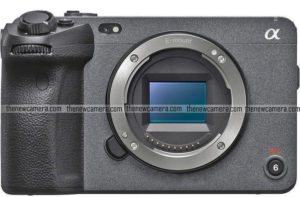
Stay tuned more updates coming
Follow us on our social pages FACEBOOK | TWITTER | INSTAGRAM, If you have time –>see more Sony Alpha Rumor
|
KEEP THIS BLOG ALIVE - Support New Camera Buy Canon Lenses, Buy Music CD or Digital Camera at amazon it helps this site, and you do not pay anything extra, it is just a way to help support this site.

|
























